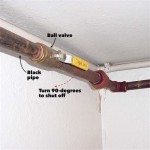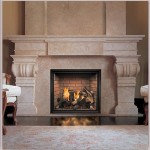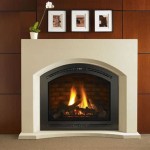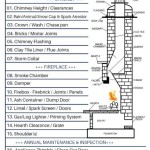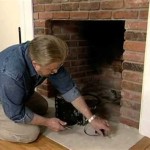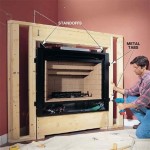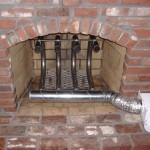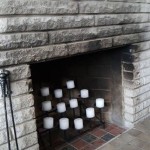Ventless Gas Fireplace Logs With Remote Control: A Comprehensive Overview
Ventless gas fireplace logs with remote control offer a convenient and aesthetically pleasing alternative to traditional wood-burning fireplaces. Their design allows for installation in a variety of locations without the need for a chimney or venting system. The integration of remote control functionality enhances user convenience, enabling adjustments to the flame and heat output from a distance. This article provides a detailed overview of ventless gas fireplace logs with remote control, covering their operation, advantages, considerations, and maintenance.
Ventless, or vent-free, gas fireplace logs operate by burning natural gas or propane with a high degree of efficiency. The products of combustion are released directly into the room, rather than being expelled through a chimney. Manufacturers design these systems to burn gas as cleanly as possible, ensuring that carbon monoxide and other emissions remain within acceptable safety limits. Built-in oxygen depletion sensors (ODS) are crucial safety components, automatically shutting off the gas supply if oxygen levels in the room fall below a predetermined threshold. This safety feature prevents the buildup of harmful gases and protects occupants.
The remote control feature allows users to ignite, extinguish, and adjust the flame height of the fireplace from a comfortable distance. Some models offer programmable thermostats, timer settings, and even fan controls, enhancing the overall user experience and energy efficiency. The remote control operates via radio frequency (RF) or infrared (IR) signals, providing reliable control over the fireplace functions.
Understanding the Functionality of Ventless Gas Fireplace Logs
The operating principle of ventless gas fireplace logs revolves around complete combustion. The design of the burner and the log arrangement are specifically engineered to maximize the efficiency of the combustion process. The logs themselves are typically made from ceramic or refractory materials, designed to withstand high temperatures and mimic the appearance of real wood. These logs radiate heat into the room, providing warmth and ambiance.
The gas supply connects to a burner located beneath the log set. When the fireplace is activated, gas flows to the burner and mixes with air. An igniter, either electronic or a standing pilot light, initiates the combustion process. The resulting flame heats the logs, which then radiate heat into the room. The remote control communicates with a receiver unit installed within the fireplace, allowing users to adjust the gas flow and, consequently, the flame height. More advanced remotes may offer diagnostic information, displaying error codes or providing details on the fireplace's operating status.
The Oxygen Depletion Sensor (ODS) is a critical safety component. It continuously monitors the oxygen levels in the room. If the oxygen level drops below a safe threshold, typically around 18%, the ODS will shut off the gas supply to the burner, extinguishing the flame and preventing the buildup of carbon monoxide. This safety mechanism is essential for ensuring the safe operation of ventless gas fireplaces in enclosed spaces.
The installation process typically involves connecting the fireplace to a gas supply line and ensuring the unit is properly positioned and secured. Professional installation is often recommended to ensure compliance with local building codes and safety regulations. Proper ventilation and room size are important considerations to prevent the buildup of moisture and maintain air quality.
Advantages of Ventless Gas Fireplace Logs With Remote Control
Ventless gas fireplace logs offer several advantages over traditional wood-burning fireplaces and vented gas fireplace systems. One of the primary advantages is the ease of installation. Because they do not require a chimney or venting system, ventless models can be installed in a variety of locations within a home, including rooms where a traditional fireplace would be impractical. This flexibility makes them an appealing option for homeowners looking to add ambiance and supplemental heat to rooms that lack existing fireplace infrastructure.
Another significant advantage is their energy efficiency. Ventless fireplaces are designed to transfer nearly 100% of the heat generated into the room. This contrasts with vented fireplaces, which lose a significant portion of their heat through the chimney. This energy efficiency can translate to lower heating costs, particularly when used as a supplemental heating source in specific areas of the home.
The remote control feature adds a layer of convenience and control. Users can easily adjust the flame height and heat output from a distance, allowing them to customize the fireplace's operation to their specific comfort levels. Some models also offer programmable features, such as timers and thermostats, further enhancing convenience and energy efficiency. The remote provides ease of use for those with mobility issues, allowing control of the fireplace without needing to bend or kneel.
Finally, ventless gas fireplace logs are generally cleaner than wood-burning fireplaces. They eliminate the need for firewood, reducing the mess associated with storing and handling logs. They also produce no smoke or ash, simplifying maintenance and reducing the risk of indoor air pollution compared to wood-burning alternatives.
Key Considerations and Safety Precautions
Despite their advantages, ventless gas fireplace logs require careful consideration and adherence to safety precautions to ensure safe and efficient operation. The most critical consideration is ensuring adequate ventilation in the room where the fireplace is installed. While the units are designed to burn cleanly, they still produce combustion byproducts, including water vapor and carbon dioxide. Proper ventilation helps to prevent the buildup of these byproducts and maintain indoor air quality.
Local building codes and regulations regarding the installation and use of ventless gas fireplaces vary. It is essential to consult with local authorities and qualified professionals to ensure compliance with all applicable codes. Some jurisdictions may have restrictions on the types of rooms where ventless fireplaces can be installed or may require professional installation.
Regular maintenance is crucial for ensuring the safe and efficient operation of the fireplace. This includes cleaning the burner and log set to remove dust and debris, inspecting the gas connections for leaks, and testing the oxygen depletion sensor to ensure it is functioning correctly. Professional servicing is recommended at least once a year to ensure that all components are in good working order.
Carbon monoxide detectors should be installed in the room where the fireplace is located, as well as in adjacent rooms. These detectors provide an early warning of carbon monoxide buildup, allowing occupants to evacuate the premises if necessary. Regular testing of the carbon monoxide detectors is essential to ensure they are functioning properly.
It is imperative to follow the manufacturer's instructions for installation, operation, and maintenance. Failure to adhere to these instructions can lead to unsafe operating conditions and may void the warranty. Never modify the fireplace or its components in any way, and only use replacement parts that are specifically designed for the unit.
Consider the size of the room when selecting a ventless gas fireplace. Overly large units can produce excessive heat, making the room uncomfortable. Undersized units may not provide sufficient heat. A qualified fireplace dealer can help determine the appropriate BTU rating for the size of the room.
Furthermore, individuals with respiratory sensitivities or allergies should use ventless gas fireplaces with caution. While these units burn cleanly, they still release combustion byproducts that may irritate the respiratory system. Consider installing an air purifier with a HEPA filter to help improve indoor air quality.
Finally, understand the limitations of remote control functionality. While convenient, the remote control does not replace the need for regular safety checks and maintenance. Always visually inspect the fireplace before each use and be aware of any unusual odors or sounds that may indicate a problem.

Napoleon Gvfl30 Ventless Gas Log Set 30 Inch

Empire Rock Creek See Through Ventless Gas Log Set Woodland Direct

White Mountain Ponderosa 24 Vent Free Gas Log Remote Ready Fine S

White Mountain Driftwood 24 Remote Ready Vent Free Logs Fine S Gas

Outdoor Vent Free 42 Complete Gas Fireplace Stainless Steel With Remote Control Vre3200 Vre3242

Builders Series 30 Inch Vent Free Gas Log Set Remote Ready

24 Valley Oak Vent Free Log G8 Ansi Bedroom Approved Burner Peterson Real Fyre

Duluth Forge Vent Less Dual Fuel Gas Log Set 18 In Stacked Red Oak Remote Control Com

White Mountain Hearth Vfdrxx Flint Hill Ceramic Fiber Gas Log Set With Ventless Burner And Millivolt Valve

Duluth Forge 22 In Winter Oak Vent Free Dual Fuel Gas Fireplace Log Set 32 000 Btu Thermostat Control 170803 The Home Depot

